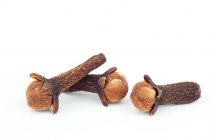 aromatic perennial, arnica (Arnica montana) can be identified by its creeping rhizome, which produces a basal rosette of four to eight downy leaves An. The flowering stem-generally unbranched-is hairy, one to two feet in height, and possesses just one or two pairs of opposite leaves. The golden yellow flowers (reminiscent of daisies) appear from mid-summer to early autumn. The plant is most preva¬lent in the central and northern regions of the northern hemisphere, most notably locales featuring sandy acid soils, ample humus, and plenty of sun.
aromatic perennial, arnica (Arnica montana) can be identified by its creeping rhizome, which produces a basal rosette of four to eight downy leaves An. The flowering stem-generally unbranched-is hairy, one to two feet in height, and possesses just one or two pairs of opposite leaves. The golden yellow flowers (reminiscent of daisies) appear from mid-summer to early autumn. The plant is most preva¬lent in the central and northern regions of the northern hemisphere, most notably locales featuring sandy acid soils, ample humus, and plenty of sun.
The famous German poet Johann Wolfgang von Goethe (1749- 1832) spoke highly of the merits of arnica tea, brewed from the plant’s flowers. He claimed it was always effective in eliminating the angina pain arising from hardening of his heart arteries (now known as arteriosclerosis).
John Heinerman relates that a famous German opera star touted ar¬nica tea for clearing up her sore throat and laryngitis. Just a few min¬utes after gargling with it, her throat felt as good as new, enabling her to go back on stage and continue singing.
Amica is typically the first choice of homeopathic and naturo-pathic practitioners in treating sports injuries such as severe bruises, sprains, wounds, and shock. It is also popular as a remedy for diabetic leg ulcers. Treatment for such conditions involves applying the herb as a tincture, ointment, or oil (but only where the skin is unbroken).
Garland, Sarah. The Complete Book of Herbs & Spices. Pleasantville, NY: Reader’s Digest Association, 1993.
Heinerman, John. “Amica (Amica montana).” In: Heinerman’s Encyclopedia of Healing Herbs & Spices. Paramus, NJ: Prentice-Hall, 1996, pp. 23-25.



